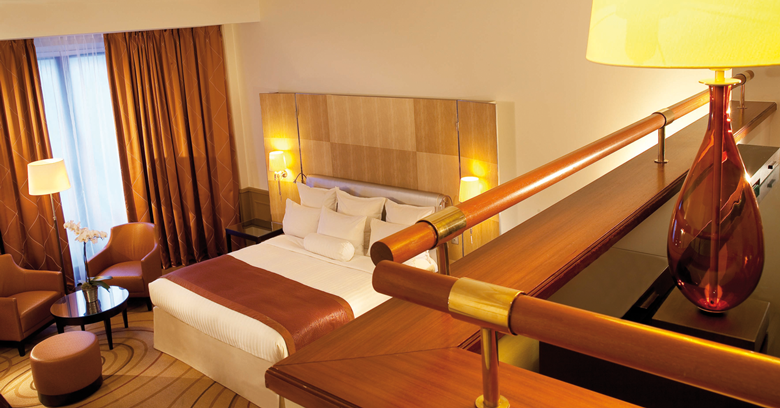Sleep & bedroom design

Here are the key bedroom design tips to ensure you create the perfect sleeping environment for your guests - (1) a comfortable and supportive bed, (2) comfortable pillows, sheets and bedding, (3) a quiet room, (4) a dark room, (5) a cool room, (6) a hygienic and clean room, free of allergens.
First, get a large, comfortable and supportive bed - Replace your bed regularly, every 3 to 5 years, to ensure it does not become too soft and unsupportive of your guest's body and spine; or too unhygienic due to spillage and stains and the natural prevalence of dust mites that can cause allergies and health problems.
Also, choose a large bed to reduce partner disturbance too. Don't forget to add a sofa bed or specify zip and link beds or to include a divan base with hidden underbeds to provide extra flexibility and to maximise room occupancy.
Hypnos always recommends a pocket spring bed where each spring moves independently and each spring creates a 'bellows-like' affect which pushes cool air around the bed so helping to regulate body temperature. The introduction of natural fillings will also help to wick away body moisture and manage body temperature.
Provide a range of additional comfort choices - Offer a choice of soft, medium firm and firm pillows - a pillow menu will enable guest's to select the style of pillow that they are most comfortable with. Add a mattress topper to the bed if a guest wants a softer but supportive feel to their bed. Remember to always include soft and sumptuous bed linen and duvet.
Add a higher specification mattress to your best rooms and suites - consider higher pocket spring counts and the greater use of natural fillings for a deeper and more relaxing night's sleep.
Provide quiet, dark and cool rooms - Don’t forget, even with the most comfortable bed in the world a great night’s sleep can be ruined by inadequate bedroom temperature control; poor sound proofing from outside noise and from noisy guests in the corridors; plus the inability to completely ‘black-out’ and block light entering the room via windows.
Guests should aim to dim their room lights 2 - 3 hours before bedtime. Lowering the lights signals your brain to produce melatonin, the hormone that brings on sleep. Light intensity can be reduced in the evenings by providing dimmer switches or lamps with low wattage bulbs.
Set the temperature in the bedroom to a cool and comfortable 16-18°C or 60-65°F. Aim to used lined curtains that completely ‘black-out’ and block light entering the bedroom via windows and doors - make sure there is also no 'blue light' from electrical items on stand by.
Protect your guests while they sleep - Protect your guests by fitting a washable mattress protector that encapsulates the top and sides of the mattress. This will prevent stains and smells and will ensure the bed is hygienic, clean and lasts longer. Use a HypnosProtect™ treated mattress to protect your guests from bed bugs too.
Finally - offer guaranteed wake-up calls and help your guests awake from their very comfortable bed.
